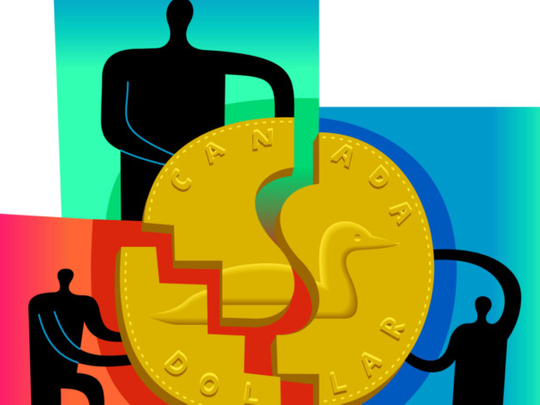
Growth in the Canadian economy weakened in the second quarter of this year following a pullback in exports and business investment. Its GDP grew by an annualised rate of 1.7 per cent between April and June, amounting to a 2.2 per cent increase in the first quarter, less than the federal agency’s previously estimated growth of 2.5 per cent.
On a monthly basis, GDP declined by 0.5 per cent in June, making it the largest drop since March 2009. The US economy has been picking up, and although this rebound is expected to provide a long-awaited boost to Canadian output, without an increase in expanded exports, it is not enough to create robust growth.
Factors at play
Natural resources — especially oil and gas — underpin Canada’s economic prosperity, and are fundamental to its social and economic fabric. But the continuing decline in oil prices is proving to be more than just a short-term threat, especially after Canadian crude fell in December 2012, slashing production revenues and rendering new investments unfeasible.
Economists say that rising student debt will also have a wider impact on the overall Canadian economy. For thousands of students drowning in debt, paying it off is difficult because tuition fees keep rising while jobs are scarce.
On June 13, Bank of Canada reported the health of Canada’s financial system as relatively sound, but issued a stark warning: “The main domestic risk to financial stability is elevated house prices combined with high household debt levels.”
Moving ahead
The bank is also forecasting gradual improvement to 1.8 per cent growth this year and 2.7 per cent in both 2014 and 2015. Meanwhile, in its March federal budget, the Canadian government projected 1.6 per cent growth this year, and 2.5 per cent in 2014, matching the projections by financial services firm TD Economics. “Momentum will pick up in the second half of this year, as the global economy regains confidence on the back of a stronger, more reassuring US recovery,” TD Economics said earlier this year.
Craig Wright, RBC Chief Economist, says: “The improving trade balance underpins our forecast for Canada’s economy to grow at rates, which should help propel the economy to full capacity in early 2015. Stronger demand for automobiles, houses and industrial machinery from the US will help sustain the lift in export growth that Canada has experienced so far this year, for the remainder of 2013.”
Parallel to this outlook is that of the Manufacturers Alliance for Productivity and Innovation (MAPI). In its Canadian Outlook 2013-2014, David Boisclair, MAPI Economic Consultant and report author, notes that Canada’s fortunes are partly contingent upon anticipated growth in the US. “Struggles in the manufacturing sector may limit growth in 2013, but there is potential for a turnaround in 2014.”
Carlos Leitao, Chief Economist for Laurentian Bank, outlines the 2013–2014 economic forecast: “Interest rates at central banks are very low and will remain that way for months, encouraging real estate investment. But with the external environment not particularly favourable, exports will remain relatively slow. In my view, Canada continues to be open to foreign investment and is a springboard into the American market.”








